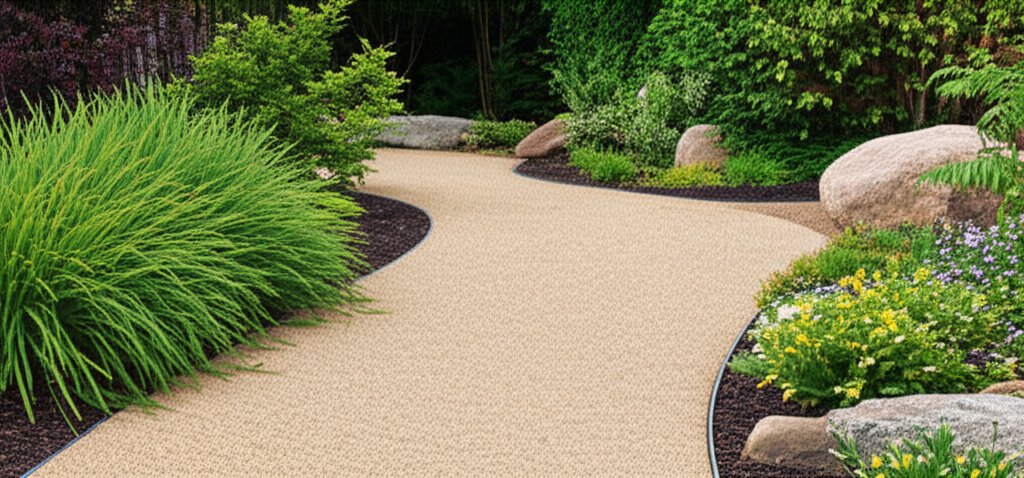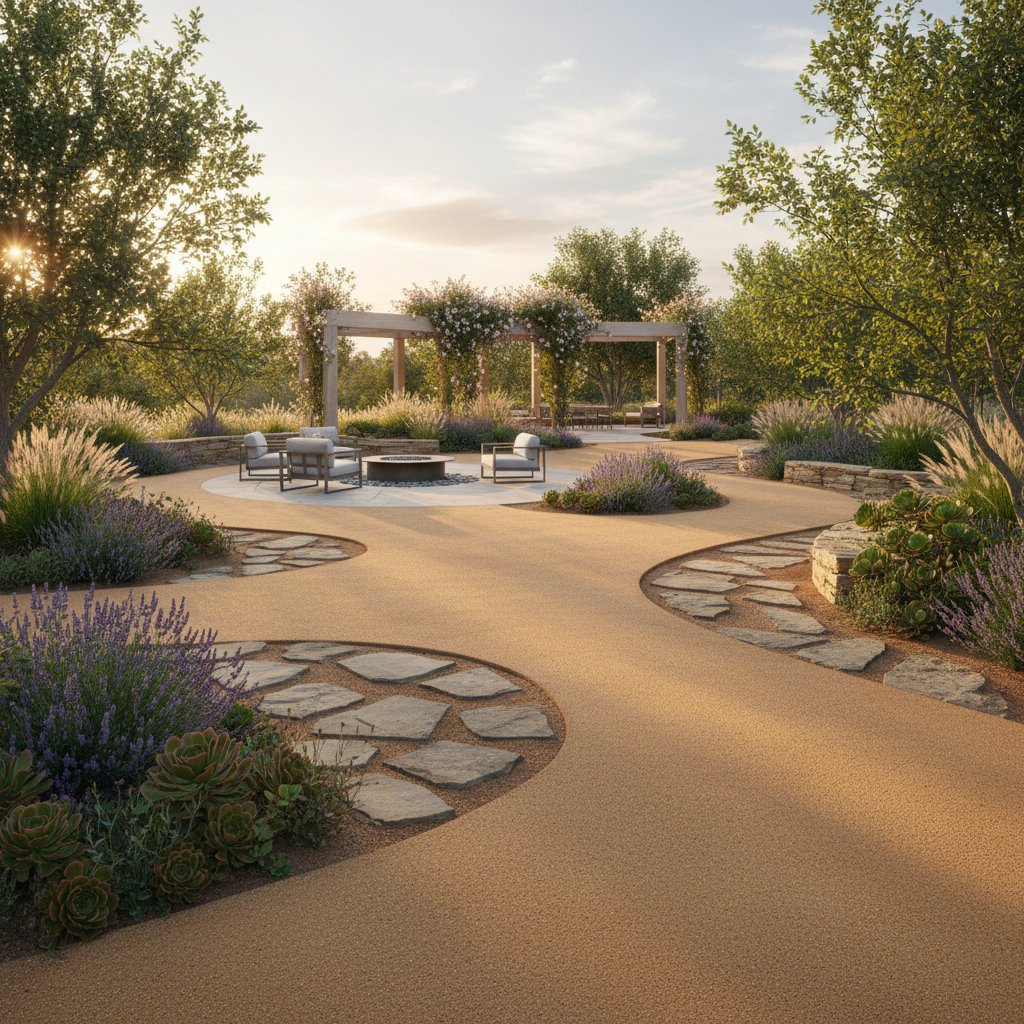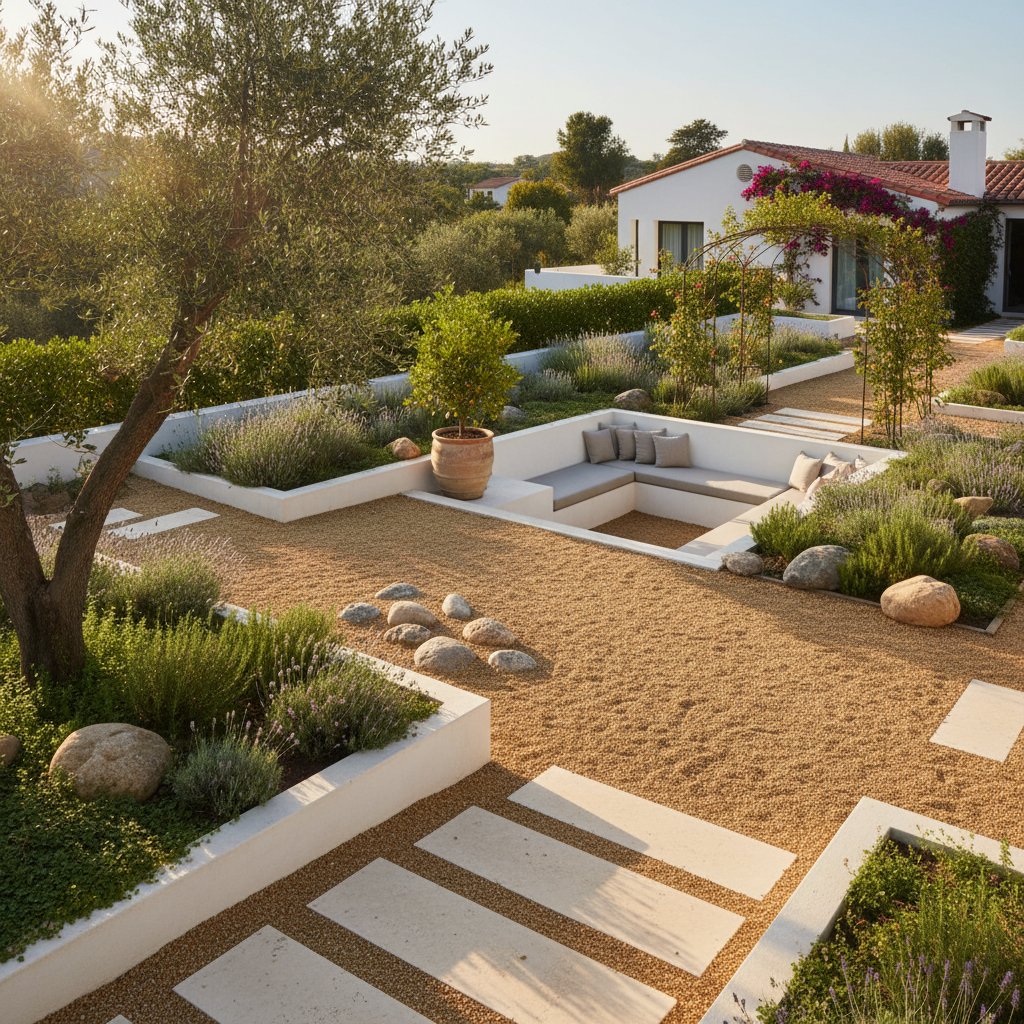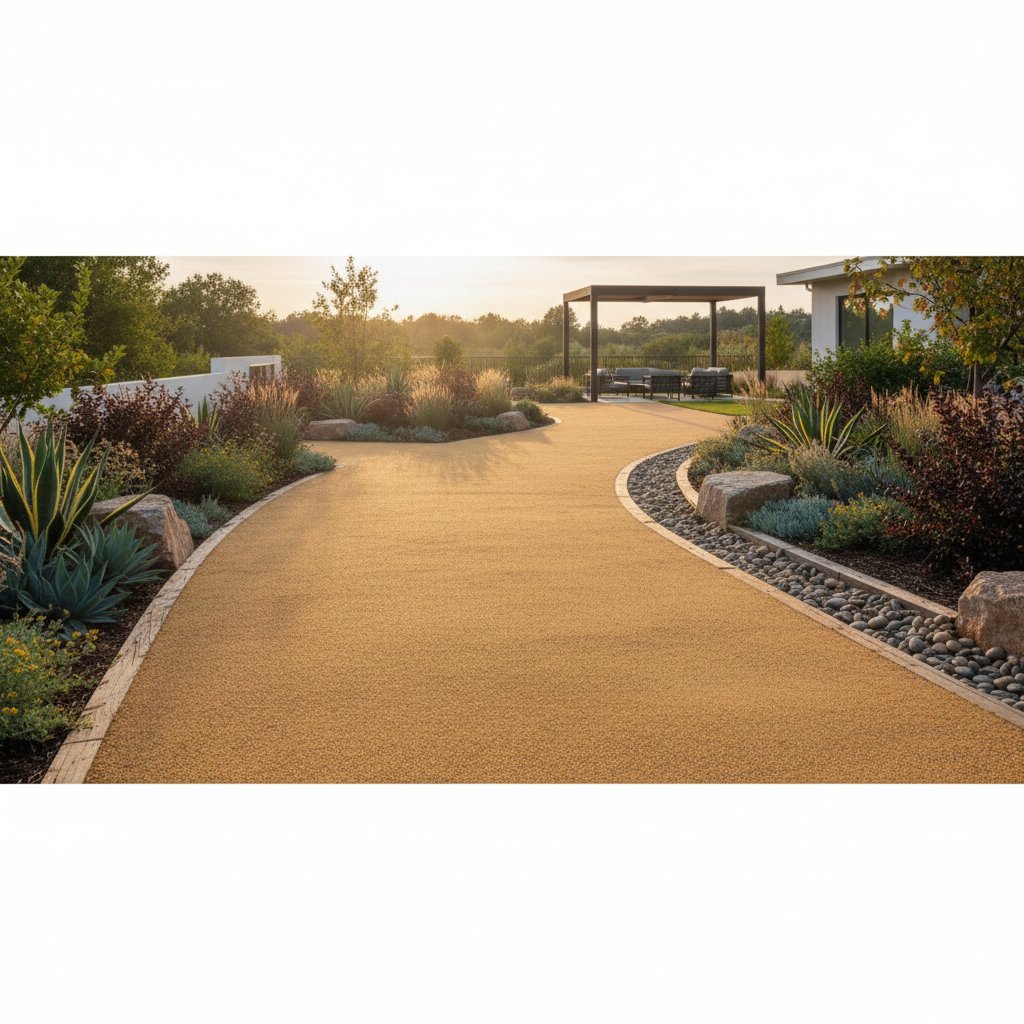Decomposed Granite Paths: The Low-Cost Hardscape Solution
Garden paths that invite exploration often possess a subtle charm, distinct from rigid pavers or sleek stone. Decomposed granite paths embody this appeal with their soft crunch underfoot and seamless integration into the surrounding terrain. Homeowners increasingly select this material to craft elegant, economical walkways that enhance any outdoor environment.
What Is Decomposed Granite?
Decomposed granite, commonly abbreviated as DG, derives from weathered granite rock fragmented into fine, gravel-sized particles. Available in hues from warm golds and tans to subdued grays, DG provides a gritty yet stable texture akin to coarse sand. Proper compaction yields a solid walking surface that permits effective drainage and ensures pedestrian comfort.
DG appears in three primary configurations, each suited to specific applications:
- Loose DG ideal for casual trails or planting zones emphasizing drainage and a relaxed appearance.
- Stabilized DG incorporates a binding additive to produce a more rigid path with reduced dust generation.
- Resin-coated DG delivers enhanced durability and a refined surface for high-use areas.
Selection hinges on the path's intended function, traffic volume, and desired level of upkeep.
Key Benefits for Homeowners
The allure of DG stems from its straightforward nature. It presents a lower cost than concrete slabs or quarried stone while achieving an enduring aesthetic suitable for traditional or contemporary gardens. This material balances functionality with visual harmony effectively.
Additional merits encompass:
- Cost efficiency relative to conventional hardscaping elements.
- Permeable design that facilitates water infiltration, minimizing erosion and standing water.
- Minimal ongoing care following initial setup and boundary reinforcement.
- Organic visual integration that tempers the edges of adjacent patios, turf, and borders.
Repairs prove simple; uneven areas require only raking, moistening, and recompaction, bypassing the need for specialized tools.
Creative Design Applications
Decomposed granite paths adapt to varied landscape contexts with versatility. In informal cottage settings, they meander through floral displays, edged by aromatic herbs or flowing perennials. For sleek modern designs, a linear DG route bounded by metal strips conveys precision and restraint.
The inherent tones and grain of DG facilitate coordination with site elements, such as echoing nearby rock formations or providing contrast against verdant foliage. Employ DG to unify yard zones, like linking a terrace to a utility structure or access point to a relaxation nook. Incorporating DG into minor gathering spots or beneath furnishings further unifies the composition.
Step-by-Step Installation Guide
Creating a DG path demands careful preparation rather than expert expertise. Outline the desired trajectory with stakes and string, then excavate four to six inches of topsoil along the route. Install a two-inch layer of crushed aggregate base, compact it thoroughly using a plate tamper, and slope the surface slightly for runoff.
Spread DG in one- to two-inch increments, compacting each layer firmly. Apply a light water spray between layers to promote settling and adhesion. Secure the edges with materials like aluminum strips, brick borders, wooden logs, or poured concrete to prevent spreading.
For stabilized variants, blend the binder per supplier guidelines, typically at a 5-10% ratio, before application. This formulation suits inclines or frequented routes by curbing displacement. Opt for loose DG in level, low-traffic locales to preserve its organic character.
Maintenance and Long-Term Enjoyment
Decomposed granite paths evolve attractively over time, acquiring a weathered patina that enhances their belonging in the landscape. Routine care involves clearing debris with a broom, replenishing displaced material in depressions, and applying occasional moisture to mitigate dust in arid conditions.
This pathway alters garden navigation profoundly. The gentle resistance underfoot promotes unhurried strolls, heightening awareness of botanical textures, ambient sounds, and shifting light patterns. Such an economical choice fosters a profound link between constructed features and the environment.
Launching Your DG Project
To embark on a DG path, commence with a modest segment, such as a connector between entry points or a perimeter along garden beds. Monitor its performance across weather cycles and alignment with your space's overall dynamic. This approach allows refinement while realizing the material's full potential.



